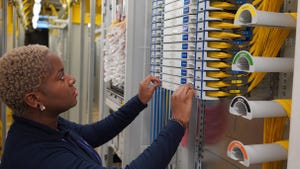Comcast's AI action extends to the network core
Cable op says a relatively new AI- and machine learning-assisted platform that orchestrates data from across the core network has helped Comcast maintain performance and rapidly pinpoint problems during the pandemic.

In addition to using a relatively new AI-assisted platform called Octave to boost capacity in the access network during the pandemic, Comcast says it has been leveraging another suite of AI-aided tools to automate core network functions and rapidly pinpoint faulty fibers and outages.
That system, dubbed the Smart Network Platform, was developed internally by Comcast in recent years to provide a real-time, autonomous view of its multivendor network. The suite also includes another internally developed tool, called NetIQ, that uses AI and machine learning techniques that scale across Comcast's core network and make thousands of measurements every hour.
Comcast said these relatively new technologies have played a big role in helping the cable operator maintain performance on the network during a pandemic that caused network demand to surge in March and April during the early phases of stay-at-home orders. According to Comcast's latest COVID-19 update, the operator has seen a 32% jump in upstream traffic growth during the pandemic and an 11% increase in downstream traffic. Comcast says it's been performing more than 700,000 diagnostic speed tests on most days.
A 'step function' in network vision
Noam Rafaelli, SVP for network and communications engineering at Comcast, characterized the real-time features and capabilities of the Smart Network Platform as a "step function" in the cable operator's ambitions to be more reactive and proactive to the evolving state and performance of its backbone and core network, all the way to the optical gear that's underpinning it.
The Smart Network Platform, which establishes a software abstraction layer that can access and normalize data being generated from multiple vendors, gives Comcast "much more visibility across our technology real estate across the network," Rafaelli explains.
It also puts Comcast in a position to automate configuration changes across the network. With NetIQ in place, Comcast claims it can see an outage "instantaneously."
The platform "creates one view of our network," Rafaelli says. "Fundamentally, it's all about [anonymized telemetry] data and data collection and how you start using data science and ML [machine learning] and AI together with the expertise of the network engineers to start understanding what all of this data enables you to do and what it enables you to trigger."
Rather than relying on interfaces and graphical user interfaces that work in silos among individual vendors such as Cisco, Juniper Networks and Arista, Comcast's internally developed platform provides a higher-level, vendor-agnostic view of the network and the ability to automate changes in software.
In turn, that provides automated learning on the state of the network and the ability to be proactive when issues crop up, with the goal of reducing outage minutes and vastly cutting down on the time it takes to mitigate or repair problems.
The overarching system, which provides data that engineers can quickly act upon, has produced a "dramatic change" in the time it takes for Comcast to identify the epicenter of a problem – such as a faulty fiber – and remediate it, sometimes before the issue impacts customers, Rafaelli says.
"For us, it was fascinating to see how you merge all of these different skill sets into something that really creates a step function," he adds.
Breaking down the vendor silos
Rafaelli said Comcast started work on this project internally about two and a half years ago when it was clear that individual solutions from vendors would not give the cable operator the comprehensive view it wanted.
"Every vendor comes with its monolithic answer to you," he says. "As the guardian of the network, you get to a point where you are frustrated from the amount of time it takes us to identify issues because all of these monolithic changes and monolithic systems that don't give you the cross-correlation and the broad view of the network … This, for the first time, is a big step function where we ... have the right visibility, the right telemetry, configuration and automation across our network."
Related posts:
— Jeff Baumgartner, Senior Editor, Light Reading
About the Author(s)
You May Also Like




.jpg?width=300&auto=webp&quality=80&disable=upscale)







